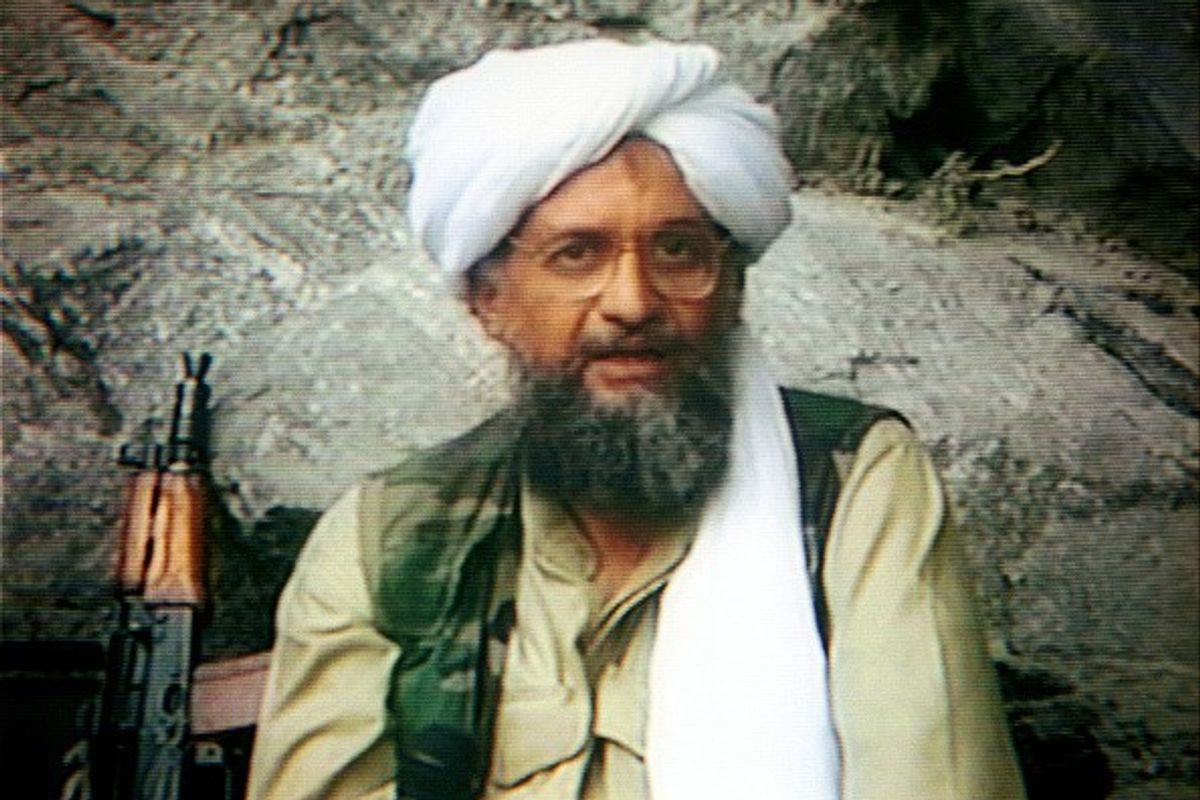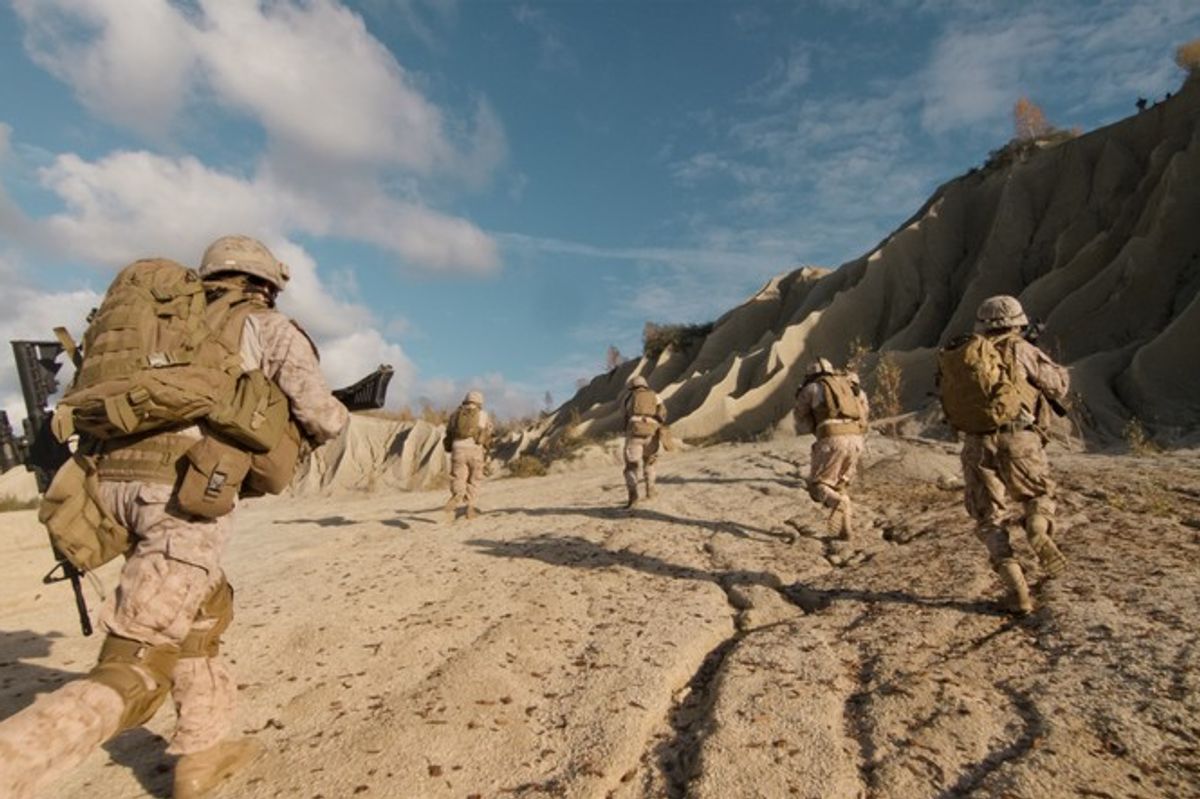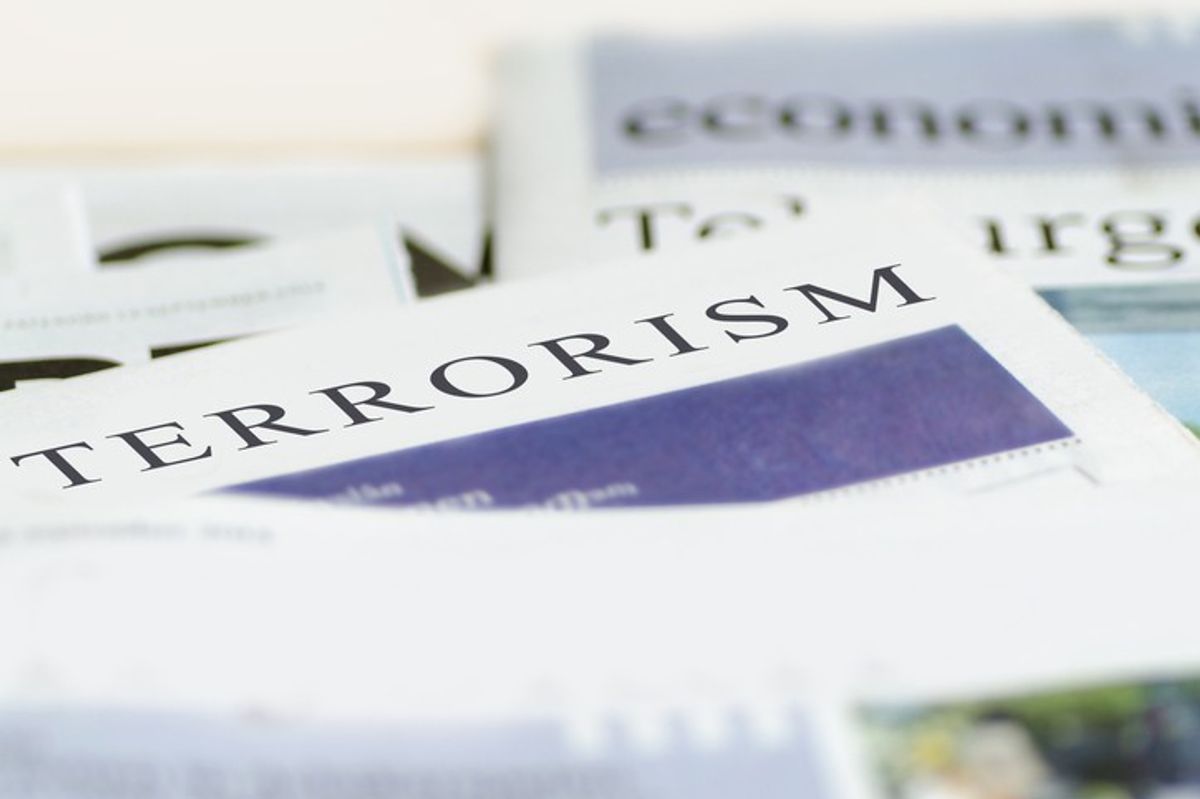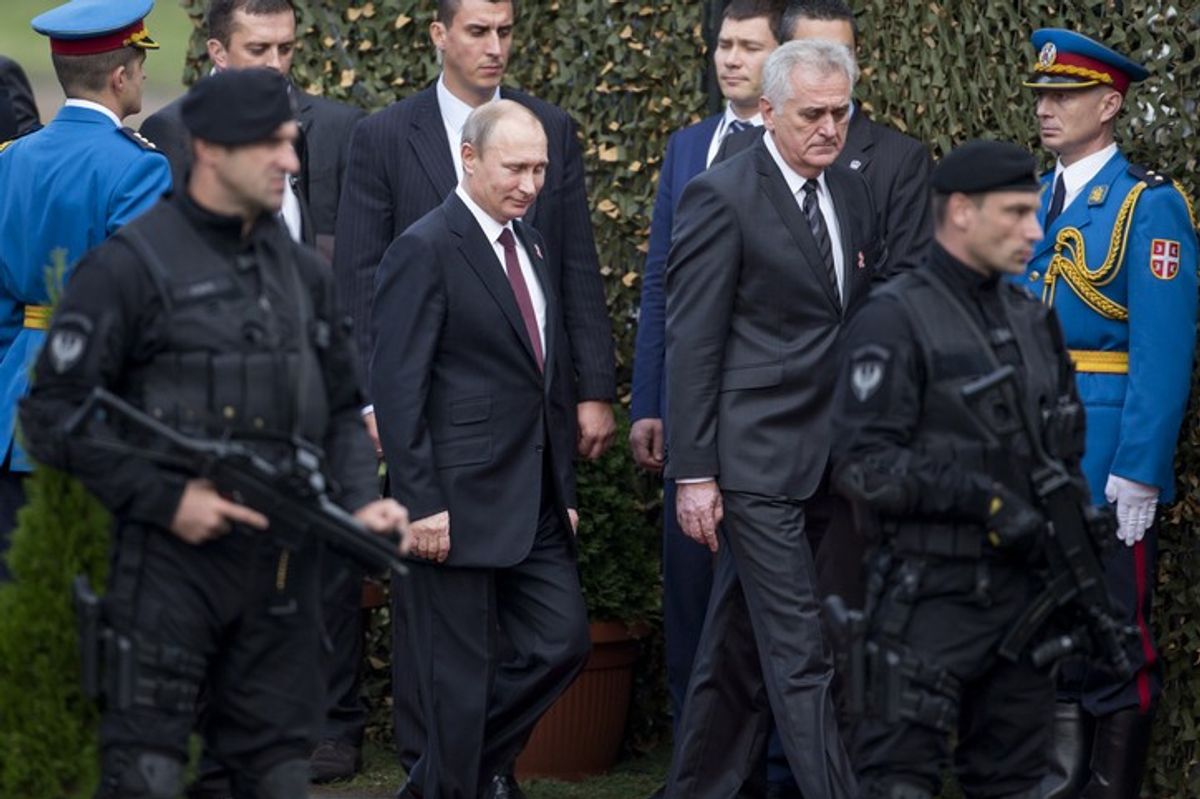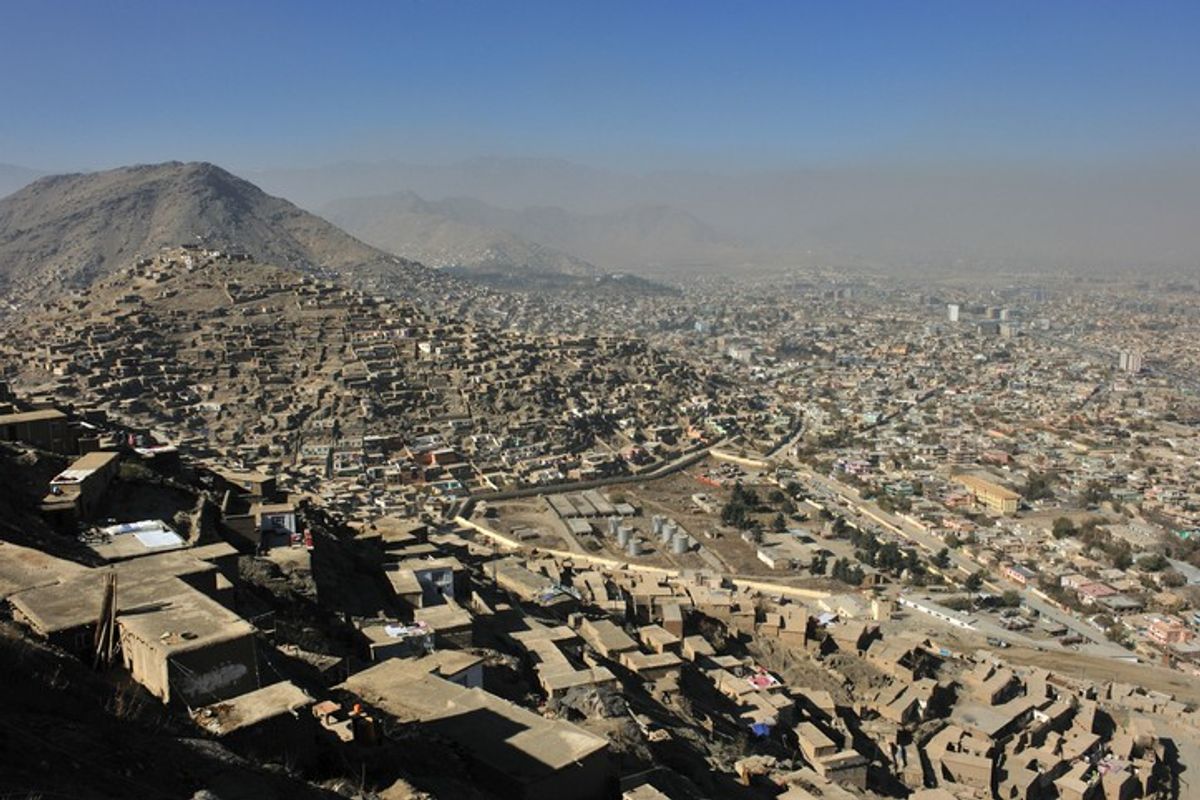Nearly two and a half years ago, General David Petraeus (US Army, Ret.) wrote an opinion piece published in The Washington Post, titled, ‘5 ‘big ideas’ to guide us in the Long War against Islamic extremism’.
His fundamental point was that the U.S. had to get the ‘big ideas’ right in order to establish a framework for the comprehensive civil-military effort required to make progress against the Islamist extremists the US has fought in unending war since late 2001. The Surge in Iraq, which Petraeus commanded from February 2007 to September 2008, had impressed upon him that determining the right big ideas was the most important task of a strategic leader. In fact, he has frequently observed since then that the surge of ideas mattered much more than the surge of forces.
The OpEd in the Post was his effort in 2016 to distill the lessons that he felt we should have learned from nearly 15 years of war against Islamist extremists. In an interview with the Cipher Brief in recent weeks, Petraeus noted that he felt that developments in the ensuing two-and-a-half years have validated the lessons he offered in the Post OpEd.
His is a particularly interesting perspective, given that in addition to commanding the Surge in Iraq, he also later commanded coalition forces in Afghanistan and U. S. Central Command, and later was Director of the CIA. And his perspective is worth revisiting as the Afghan Taliban indicates a willingness to hold talks with the U.S. at the same time that they have launched a particularly deadly series of operations across Afghanistan.
Among the lessons that General Petraeus noted in 2016 was the fact that it was becoming obvious that Islamic extremists would continue to exploit “ungoverned spaces” in the Muslim world that stretched from West Africa through the Middle East and into Central Asia and beyond.” Moreover, “Las Vegas rules” were not in effect in those locations, as extremist actions in those spaces would not stay in those spaces; rather, they would spill over into neighboring countries and beyond, spewing violence, extremism, instability, and a tsunami of refugees not just throughout the respective region but all the way into the countries of our allies in Europe, as well. He suggested that U.S. leadership inevitably would be required to help keep threatened areas from falling into the hands of extremists who would plan, direct, and carry out missions against the U.S. and the West, though he also noted the wisdom of building a coalition of countries to combat the extremists, with Islamic countries of particular importance in such coalitions. He further noted a paradox of these situations – that one could not counter terrorist groups like the Islamic State and Al Qaeda and their affiliates, with just counter-terrorist forces; rather, a comprehensive civil-military campaign was required, with all the elements of the campaign mounted by coalition and Iraqi forces during the Surge in Iraq. But, he noted, there was now a hugely important difference – that U.S. and coalition forces did not need to be on the front lines or leading many of the other efforts that comprise a comprehensive approach. Instead, the U.S. and coalition countries could help with training and equipping, and provide advice and assistance, particularly in the form of unmanned aerial vehicles, precision air attack, and fusion of intelligence. This was critical, as it meant that host nation forces would now do the bulk of the fighting – and dying – and that coalition forces could dramatically reduce the costs to their countries in terms of blood and treasure. It was this development, in fact, that was enabling the U.S. and coalition countries to do what previously was viewed as impossible for democracies, to fight long wars – a very important development given Petraeus’s final observation that the fight against Islamist extremists was likely to be a generational endeavor, not one of a decade, much less a few years.
The Cipher Brief checked in recently with General Petraeus, who is one of our Cipher Brief experts, to talk about the recent deadly advances made by the Afghan Taliban and what, if anything, had to be altered in the lessons he offered 2-1/2 years ago, as well as what needs to be done now in order to deal with the threat of the Afghan Taliban.
The Cipher Brief: You wrote in 2016 for The Washington Post that the war against extremism would likely be a generational war, with no end in sight in the short term. What, if anything has changed, and has the U.S. made any real advances in terms of its ability to combat that threat in Afghanistan over time?
Gen. Petraeus: We’re having a reasonable amount of success in the way we’re able to conduct operations against Islamist extremists in places like Iraq, Syria, North Africa, and Somalia – thanks to the constellation of ISR (Intelligence, Surveillance and Reconnaissance) platforms that we now have and given the precision air assets and intelligence fusion that we can bring to bear, as well. The proliferation of Reapers, in particular, has truly transformed the way we’re able to fight, so that we end up training, equipping, advising, and enabling local forces, rather than fighting on the front lines and performing the host of other tasks that we had to undertake during the surges in Iraq and Afghanistan. The enabling piece is the one that has improved most dramatically thanks to the increase in ISR platforms, ever more precise munitions, considerable airpower, and the industrial strength ability to fuse intelligence.
Having said that, the situation in Afghanistan has deteriorated in recent months as the Taliban and various other insurgent and extremist groups have sought to put renewed pressure on the Afghan Security Forces in various areas of the country while simultaneously carrying out barbaric suicide attacks against large gatherings of Afghan civilians. But with the progress in Iraq and Syria, there has been an ability to shift certain “enabling” assets to Afghanistan. Additionally, of course, a modest number of additional U.S. and coalition forces was deployed in the past year or so, including the first of an experimental U.S. Army structure, the Security Force Assistance Brigade. And, gradually, organic Afghan air assets and additional Afghan Special Operations Forces have been coming on line. Regardless, the situation is, as our British partners would say, quite “fraught,” and we will need to watch it closely to ensure that the deterioration does not continue, further shoring up the U.S. and coalition enablers, if necessary.
Additionally, and disappointingly, the Afghan political situation has deteriorated as well. And the combination of security and political challenges is very concerning as the country approaches the next presidential election.
The Cipher Brief: How are we going to know whether the adjustments of recent months have been enough to make an overall impact on progress toward the long-term goal, which is to be able, over time, to turn the country over to local forces and be assured that extremists won’t once again exploit ungoverned, or weakly governed spaces?
Gen. Petraeus: First, let’s always remember why we went to Afghanistan and why we have stayed. Quite simply, we invaded Afghanistan to eliminate the sanctuary that Al Qaeda had under Taliban rule in Afghanistan, the sanctuary in which the 9/11 attacks were planned and the initial training of the attackers was conducted. We did that early on, of course, and we have prevented Al Qaeda and, now, the Islamic State, from re-establishing such a sanctuary. We have also effectively used Afghanistan as a platform for the regional counter-terrorism campaign. Second, we actually have transitioned control of the security of Afghanistan to Afghan forces, albeit with considerable continued support from U.S. and coalition advisors and various “enablers” (e.g., the ISR platforms, air assets, etc.). Third, given the deterioration of the situation, it is clear that the drawdowns during the final years of the previous administration were overly aggressive; indeed, however reluctant President Obama may have been to halt the drawdown in 2016, he clearly made the right call then – just as did President Trump when he decided on the modest number of additional forces for the U.S. contingent and a number of our coalition partners did likewise.
I personally doubt that we’re going to see notable progress in security the near term; in truth, the objective now should be to stabilize the current situation and to then use the winter to shore up Afghan forces and capabilities as much as is possible. Beyond that, the sooner we acknowledge that this is a contest of wills with the insurgents and extremists, the better. At the end of the day, when you tell the enemy in advance that you are going to draw down, you indicate that your will is lacking. And I think it is time to indicate that we believe we can – and will – sustain the current level of effort as long as is required. As I have noted in the past, there is no magic hill out there that you can take, plant the flag, declare success, and come home to a victory parade. I think we have to stay at it; of course, that’s particularly difficult if your host nation partners have a variety of challenges and limitations, as they clearly do in Afghanistan, but given how we have been able to reduce the cost in blood and treasure, we can do that.
I would contend that the current posture is, in fact, quite affordable. We’ve got somewhere around 15,000 Americans in uniform on the ground now, along with a reasonable contingent of coalition soldiers. We are taking occasional casualties, but vastly fewer than when I was privileged to command the 150,000 coalition forces in Afghanistan (100,000 of which were American). And we obviously have reduced the financial cost dramatically, as well. In essence, we now have a sustainable level of commitment; and that is obviously very significant, as it is likely that we will have to sustain it for some time. By contrast, we’ve had 30-40,000 troops on Korean soil for many decades because we saw U.S interests there as important. And we obviously had some 250,000 Americans on German soil for over four decades until the end of the Cold War. Those decisions should be kept in mind when considering how long we can and should remain in Afghanistan.
The Cipher Brief: So a realistic expectation would be to plan for a U.S. troop presence in some form in Afghanistan as a long-term commitment, making the long war even longer?
Gen. Petraeus: Yes. And that’s actually the commitment of will that has the best chance of influencing the enemy to be willing to negotiate. One of the reasons the Afghan Taliban has never really entertained serious negotiations is that they have thought they can outlast us. “You may have the watches,” they have observed, “but we have the time.” And if we show that we can carry out this commitment in a manner that is sustainable for a democracy - something people thought was not possible, but that we are now proving is possible - then I think the enemies there might realize that they cannot achieve their aims on the battlefield and have to give it a try at the negotiating table. And then, you may actually be able to get to some kind of meaningful negotiations, though I would be cautious about that, especially given that the headquarters of the various insurgent groups – the Afghan Taliban, the Haqqani Network, and the Islamic Movement of Uzbekistan, as well as Al Qaeda and ISIS – are on Pakistani soil and thus beyond our reach, with some exceptions. Beyond that, unfortunately, the red lines for the Taliban remain completely incompatible with the government in Kabul. So we need to be measured in our assessments of the prospects for negotiations, even as we pursue them. Beyond that, we certainly should re-energize the “reintegration” initiative that we pursued for several years in Afghanistan to get the rank and file of the various insurgent groups, individuals who typically stay in Afghanistan rather than retreating to Pakistan when under pressure, to come in from the cold and be part of the solution in the new Afghanistan rather than a continuing part of the problem. (We did get 20-25,000 insurgents to reintegrate during the surge in Afghanistan; however, while that was helpful, if was nowhere near enough – and likely some reverted to insurgent activities once the pressure on their areas was reduced.)
The Cipher Brief: That’s an important overview of why it matters so much to get the strategy and leadership right for the long term, based on what the U.S. has learned in the years since the conflict began. What about the practical issues in regards to the Afghan Taliban? What concerns you the most in the near-term?
Gen. Petraeus: What concerns me is that they have sanctuaries in another country, a country that is unwilling to take action against them, Pakistan. And in some cases, Pakistan may - and we have to say may because there has never been extensive and definitive evidence on this - may actually be helping them. At the least, Pakistani forces are certainly not going after them (though they have gone after the Pakistani Taliban, a different element from the Afghan Taliban). In Baluchistan, where the Afghan Taliban leadership has sanctuary, for example, it appears that the Pakistani Army has at least a tacit understanding with the Baluchis that they will not do anything but run the Army staff college in Quetta and maintain border posts along the boundary with Afghanistan, which appear fairly ineffectual.
The idea that all of a sudden the Taliban are going to negotiate I find unlikely, though it is certainly worth trying. I’m not saying we shouldn’t reconcile if we can; after all, we did that on a large scale in Iraq (though we also pursued the leaders – deemed irreconcilables – even more relentlessly than before). But there are enormous differences between Iraq and Afghanistan. And among the most significant is, again, that the enemy has sanctuaries that are generally beyond our reach, with a couple of exceptions here and there.
If you can’t go after the Taliban headquarters in Quetta, if you can’t go after the Haqqani headquarters, with some exceptions, in North Waziristan, if you can’t go after the IMU headquarters, and on and on, that makes it an exceedingly difficult situation. And if you acknowledge that Al Qaeda and now IS very much want to return to certain parts of the country and establish the kinds of sanctuaries that Al Qaeda had under the Taliban, you’re in a tough situation.
The Cipher Brief: Would more pressure from the U.S. on Pakistan make a difference? There have been threats before to tie U.S. aid to cooperation in Pakistan. We’ve seen it tried before, but arguably not very successfully. Do you think that might be coming down the road?
Gen. Petraeus: We’ve had many conversations on this subject. And there was a period, throughout most of 2009 in fact, during which we had a very good partnership with the Pakistanis. I was CENTCOM Commander at the time, and we had Special Forces teams all the way down to the tactical command posts of brigades in the Frontier Corps. We were helping them in a variety of ways, flying reconnaissance missions, rushing them artillery ammunition when they got low on that, delivering the F-16s, helping them rebuild their Special Operations Brigade, helping them establish their counter-insurgency center, and all kinds of other partnerships. Admiral Mike Mullen, the Chairman of the Joint Chiefs of Staff, and I worked hard, in particular, to build a good relationship with General Ashfaq Kayani, the Pakistani Chief of Army Staff. And Pakistani forces did a very impressive job, though of course they were focused mostly on the Pakistani Taliban, not the Afghan Taliban or Haqqani. But they did clear and hold important areas that the Pakistani Taliban had seized – Swat, Baijur, Mohmand, Khyber, Orakzai, and part of South Waziristan, taking very tough casualties along the way. Unfortunately, just as they were beginning to squeeze North Waziristan, home to the Haqqani, IMU, and some Al Qaeda leaders, the Pakistani Army ran out of steam.
As I noted, we were providing a lot of help during that year. And then all of a sudden we had the combination of Wikileaks revelations about the Pakistanis that were unkind, the release of Bob Woodward’s book that included additional critical observations, and the Raymond Davis incident, and that combination essentially took the wheels off the bus. What I don’t know is whether the Pakistanis could have continued squeezing North Waziristan, which was the agreement that we had at the time. Needless to say, given the extreme terrain and limited infrastructure, it would have been a very, very tough place to clear and hold. In fact, I’m not at all sure the Pakistanis had the ability to hold it; and if they had, I’m not sure theystill had the will after all the casualties they had taken. That’s always been the challenge. But that was an extraordinary year, one in which Ambassador Holbrooke and I worked hard on Capitol Hill to get Pakistan a 5- year commitment from Congress for $1.5 Billion each year in economic aid, while the U.S. Military was providing another $2 Billion in coalition support funds (CSF) and various other categories of security assistance funding.
And, again, Admiral Mike Mullen and I were heavily engaged with General Kayani, the Pakistani Army Chief, as were the members of the U.S military group in Pakistan with their counterparts. But we have never re-established that kind of relationship for a variety of reasons. The challenge has always been the Pakistanis just won’t, or can’t, acknowledge that the truly existential threat to their country is the internal extremists, not that posed by neighboring countries. But even were they to embrace this reality, there is a question about their ability to deal with the various elements that have sanctuary on Pakistani soil.
I’ve watched three different administrations be frustrated by this situation, starting with the final years of the Bush administration, almost the entire period of the Obama administration— with the exception of 2009 – and now the Trump administration. Every time there’s a prospect of true progress, something happens that derails it. At the end of the day, Pakistan is a country with extraordinary economic, political, demographic, extremist, environmental, education, and geographic challenges. While I hope that Pakistan’s new Prime Minister can achieve the same level of success as the country’s political leader that he achieved on the cricket pitch, I fear that the challenges facing him as PM will be even more formidable than were the challenges when he led the Pakistani cricket squad to the world championship.
The Cipher Brief: Here’s a little bit of a wildcard question. What is your view of utilizing private contractors in Afghanistan in a much bigger way, as currently being advocated by Erik Prince, the founder of Blackwater? Good idea or bad idea?
Gen. Petraeus: Well, we are already augmenting our troops in Afghanistan with very substantial numbers of contractors, as we do in virtually every other country where we are deployed. In fact, during the Surge in Iraq, I think we had at least as many contractors as we had men and women in uniform, if not more. Contractors are preparing and serving food, they are washing dishes, they are performing base support missions, they are maintaining vehicles and aircraft, they are providing local base security, they are refueling planes, they are helping with training, they are augmenting intelligence teams, etc., etc. They are essentially doing everything that can be done to enable our forces to do what only they can do, which is to go outside the wire and advise and assist and enable host nation forces – and, on occasion, to engage the enemy and local populations, as well. So the question is not whether we should use contractors; rather, it is whether we should use contractors in the same way that we use our combat troops? And I think that’s a fundamentally questionable idea for a variety of reasons.
The assumption that you’d be able to recruit enough really talented, experienced, well-trained, high quality people (and quality is the key) who are going put it on the line for sustained periods of time for a contracting firm, and put them in large numbers alongside the Afghans in combat is probably not realistic. I don’t know how much you’d have to pay them to do that. If you look at what they do pay just security contractors performing more straightforward missions, it’s got to be close to $1 million dollars, per person, per year (for U.S. contractors, at the least) when you add up the cost of salaries, billeting, food, insurance, transportation to and from, rotations, combat vehicles, radios, navigation systems, counter-IED systems, etc. And by the way, that’s for relatively straightforward security duties - vehicle escort to and from the Palace, securing the Embassy, convoy security, etc. – missions that certainly have risk (especially convoy security), but can likely be performed by other than former Special Forces. The idea that one could find the number of quality people needed, with periodic rotation, is highly unlikely. Tragically, we saw security contract forces grow so rapidly in Iraq that it apparently became difficult to recruit the high quality people needed for security escort duties in a lethal environment, and we had a shooting incident at a traffic circle in Baghdad near the Green Zone that had very serious ramifications for the overall mission. I was the commander there at the time. And that event caused serious damage to the whole campaign, and subsequently we had to go to great lengths to ensure appropriate enormous controls on security contractors. So, again, this is an idea whose assumptions likely need considerable testing and validation before we stake the future of the mission on them.








